Call them what you like. That woven mess of dirt and hair can often determine what kind of a trim can be done on a pet. They are the best friend – and the worst enemy – of the professional pet groomer.
The key to dealing with these trouble areas is knowing how to identify them and deal with them effectively.
4 Types of Mats
1.) Lack of Maintenance: The owner brushes between grooming but it is not as effective or as often as it should be. Dirt, static, and moisture are usually the culprits. More frequent bathing and brushing to remove dense undercoat is needed in these cases. The mats produced from poor maintenance are generally smaller and can be removed with the proper knowledge, tools, and products.
2.) Neglect: These tangles are tough. Typically, these mats result of longer-term neglect and are very tight and difficult to remove. Many times, the dog’s coat is in extremely overall poor shape and is very dirty. They can be a hiding place for pests like fleas and ticks and may lead to skin damage or injury.
3.) Friction: Friction mats are caused when two areas rub together. It could be from a collar, dog sweater, or from a body part (like behind the ears or under the front legs) – but is not limited to those areas. Depending on the activity level of the dog, friction mats could be found up and down the legs, on long ears, or the tail. These are the areas that come in contact with other areas like tall grasses or even the ground.
4.) Compression: This type of tangle is generally found on the rear of the dog. It is caused from sitting or lying down. Dogs that shed heavily will have dead coat packed into the guard coat, and if not removed, will clump and mat as moisture and compression do their work. Just like people, dogs tend to be left or right-sided. The compression type density will be worse on one side more than the other.
Here is the best way to deal any type of tangle…
Find them before the client leaves!
That means at check-in. This is not just a time to be catching up with your client. Use this time to diagnose problem areas with their pet’s coat. Get your hands on the dog – not just your eyes! The eyes can be deceiving. The owner doesn’t even have to be aware of what you’re doing.
I disguise my hands-on inspection as a meet-and-greet to the pet. It warms up both the pet and the client. But more importantly, it gives me valuable information. Information that I can use to communicate effectively with a customer about the type of trim we can do, the cost, and the amount of time it will take.
Sink your hands deep into the coat. Keep moving. Feel under the ears, in the armpits – get to those friction and compressed areas so there are no surprises once you get the dog in the tub. Do you know what you’re feeling for? You’re trying to find patches of density/inconsistent density in the fur. You should be able to come into contact with the skin. Often, your client will insist that the dog is completely brushed out when in truth – they’ve just been brushing out the tops of matted areas. This is where your comb comes in handy for a demonstration. Sink the comb through the coat. If you feel resistance, that’s your matted area.
 Remember, the groom starts as soon as the client walks in the door, not when the dog is on your table. You should start assessing the dog visually as soon as the pet walks in and continue your examination until you are satisfied that you have found everything you need to discuss with your client before s/he leaves. Having to make repeated phone calls because you didn’t take the time to properly check over a pet will annoy your client – and will waste much of your own precious time.
Remember, the groom starts as soon as the client walks in the door, not when the dog is on your table. You should start assessing the dog visually as soon as the pet walks in and continue your examination until you are satisfied that you have found everything you need to discuss with your client before s/he leaves. Having to make repeated phone calls because you didn’t take the time to properly check over a pet will annoy your client – and will waste much of your own precious time.
But don’t stop there. You should always have a comb within reach. Clients may not always understand what a mat is, but it’s hard to deny a comb stuck firmly in the middle of tangled fur. It’s also a great way to open the discussion about the necessities of combing, as well as brushing, to maintain proper coat condition.
If there are problems or issues, I want to deal with them immediately before the client leaves. In the service-based business, education is the key. Most of the time, this means educating the client as to what is proper maintenance for their pet. Guide their hands to the problem areas. Have them feel for themselves what to watch for, so that when they’re brushing their pet at home they are better able to identify mats and how to deal with them. Many first time pet owners have really no idea what they’ve gotten themselves into when it comes to proper pet maintenance. They may love the idea of having a Golden Doodle, but have no idea that they should be groomed more than twice a year.
This is the perfect time to do that. With new clients, I would talk to them about trim options based on the condition of their pet. If their pet is in extremely difficult condition, I would talk to them about the risk factors the pet is going to experience due to its condition. Explain the potential risks that could occur during dematting. And always have the owner sign a pet release form (see examples from the Paragon School of Pet Grooming below). It also offers you an opportunity to offer beneficial special products or services to the pet or its owner.
By using your training, experience, and professional intuition, you can educate your client and make a real difference in the lives of the pets entrusted to your care.
~Happy trimming,
Melissa

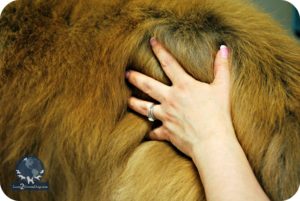

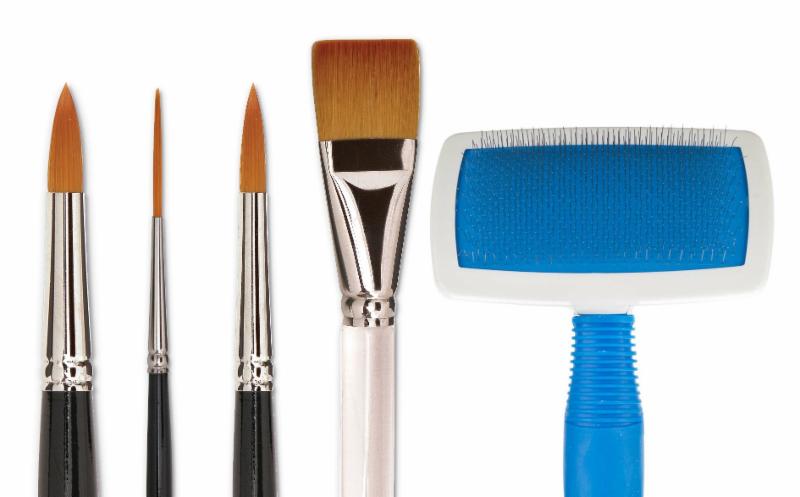 If you ask people in our industry if they think grooming and styling pets is an art form or a skilled trade, most would say that it’s a little of both. I agree. When you watch members of GroomTeam USA at work, their efforts are definitely works of art. Skills like theirs take years to develop. Today, I want to talk about one aspect of that development: learning to see like an artist.
If you ask people in our industry if they think grooming and styling pets is an art form or a skilled trade, most would say that it’s a little of both. I agree. When you watch members of GroomTeam USA at work, their efforts are definitely works of art. Skills like theirs take years to develop. Today, I want to talk about one aspect of that development: learning to see like an artist.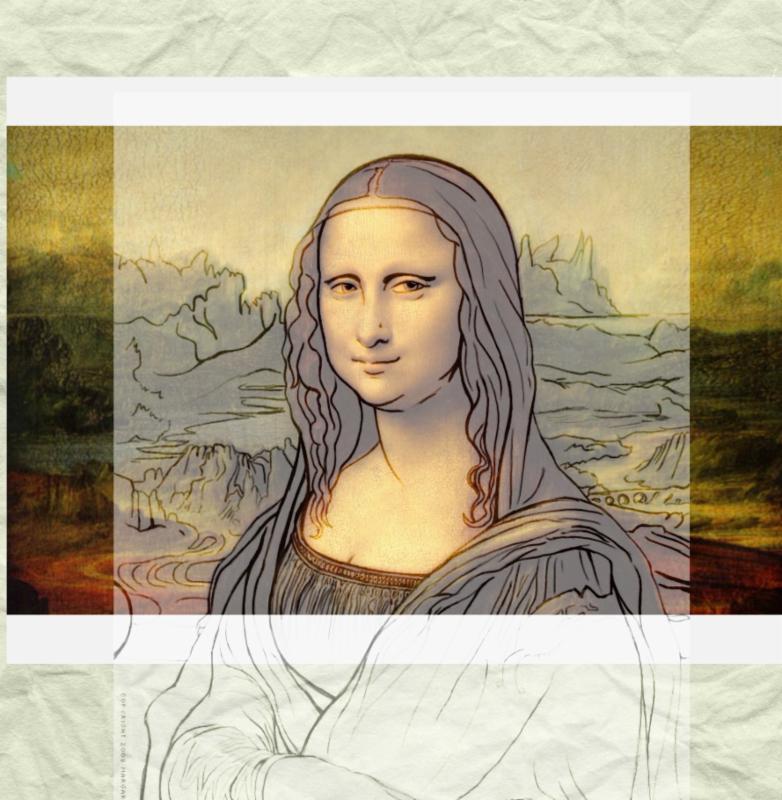 So I’m staring at the page… what am I looking at? What am I looking for? When I’m staring at that blank sheet of paper, I’m seeing what I will put there. As I stare into that whiteness, I’m watching the colors and lines take shape in my mind and align themselves on the page. It’s like my mind has produced a transparency of the finished product and has mentally created an overlay onto the page. All I have to do is put the marks on the paper. If I’m sculpting, I’m staring at the lump of rock and seeing the shape of what I want to create in the stone. All I have to do is remove all the stuff around it and let it out.
So I’m staring at the page… what am I looking at? What am I looking for? When I’m staring at that blank sheet of paper, I’m seeing what I will put there. As I stare into that whiteness, I’m watching the colors and lines take shape in my mind and align themselves on the page. It’s like my mind has produced a transparency of the finished product and has mentally created an overlay onto the page. All I have to do is put the marks on the paper. If I’m sculpting, I’m staring at the lump of rock and seeing the shape of what I want to create in the stone. All I have to do is remove all the stuff around it and let it out.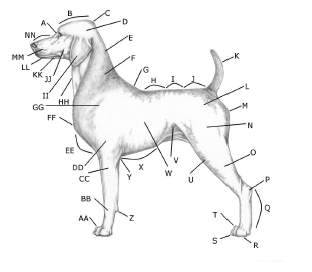 Trim styles are all about anatomy. Groomers need to know their breed standards and to know them they need to understand anatomy. If you’re a visual learner, get out your reference material and study the images until you can see them on any dog that walks into your salon. If you’re a tactile student and learn by doing, get those books out and learn to find reference points on dogs through your sense of touch. Feel where the point of rump is, the point of shoulder, and the barrel of the chest. If you can’t see them, learn your anatomy reference points by touch. Then learn to do both. Developing your knowledge base creates reliable instincts and reflexes.
Trim styles are all about anatomy. Groomers need to know their breed standards and to know them they need to understand anatomy. If you’re a visual learner, get out your reference material and study the images until you can see them on any dog that walks into your salon. If you’re a tactile student and learn by doing, get those books out and learn to find reference points on dogs through your sense of touch. Feel where the point of rump is, the point of shoulder, and the barrel of the chest. If you can’t see them, learn your anatomy reference points by touch. Then learn to do both. Developing your knowledge base creates reliable instincts and reflexes.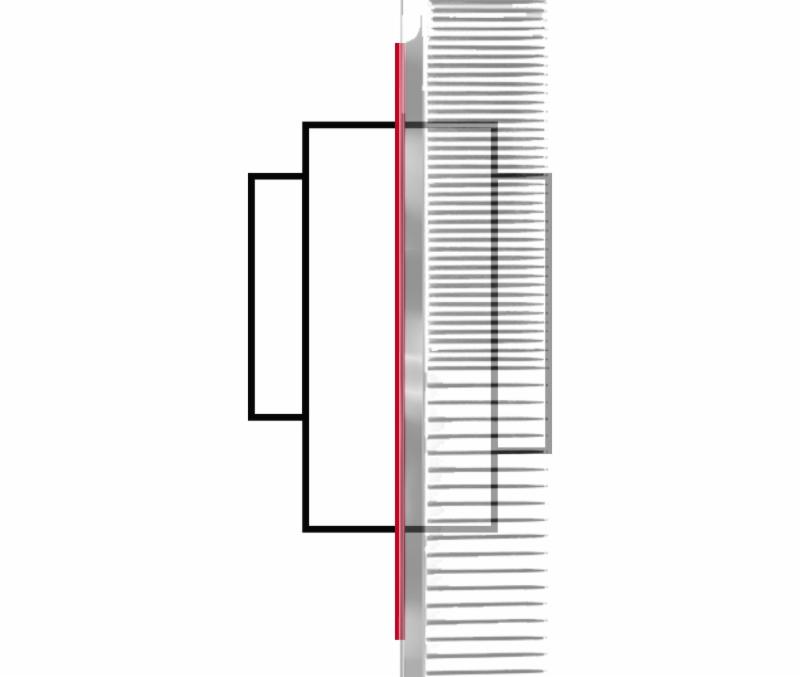
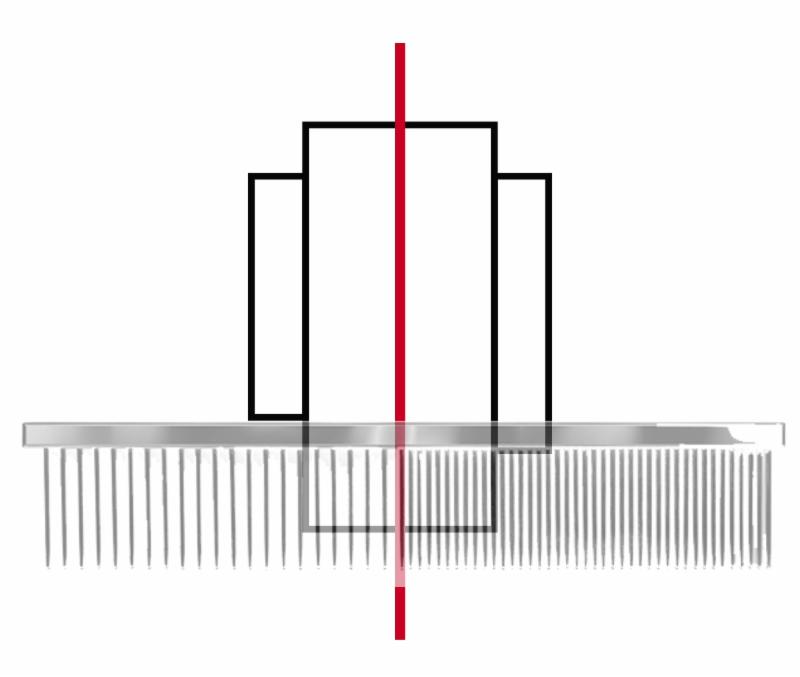 Have you ever wondered why artists extend their thumbs, or hold up a pencil or brush and stare at it at arm’s length? What they’re doing is making visual measurements and that thumb or brush is the ruler.
Have you ever wondered why artists extend their thumbs, or hold up a pencil or brush and stare at it at arm’s length? What they’re doing is making visual measurements and that thumb or brush is the ruler.